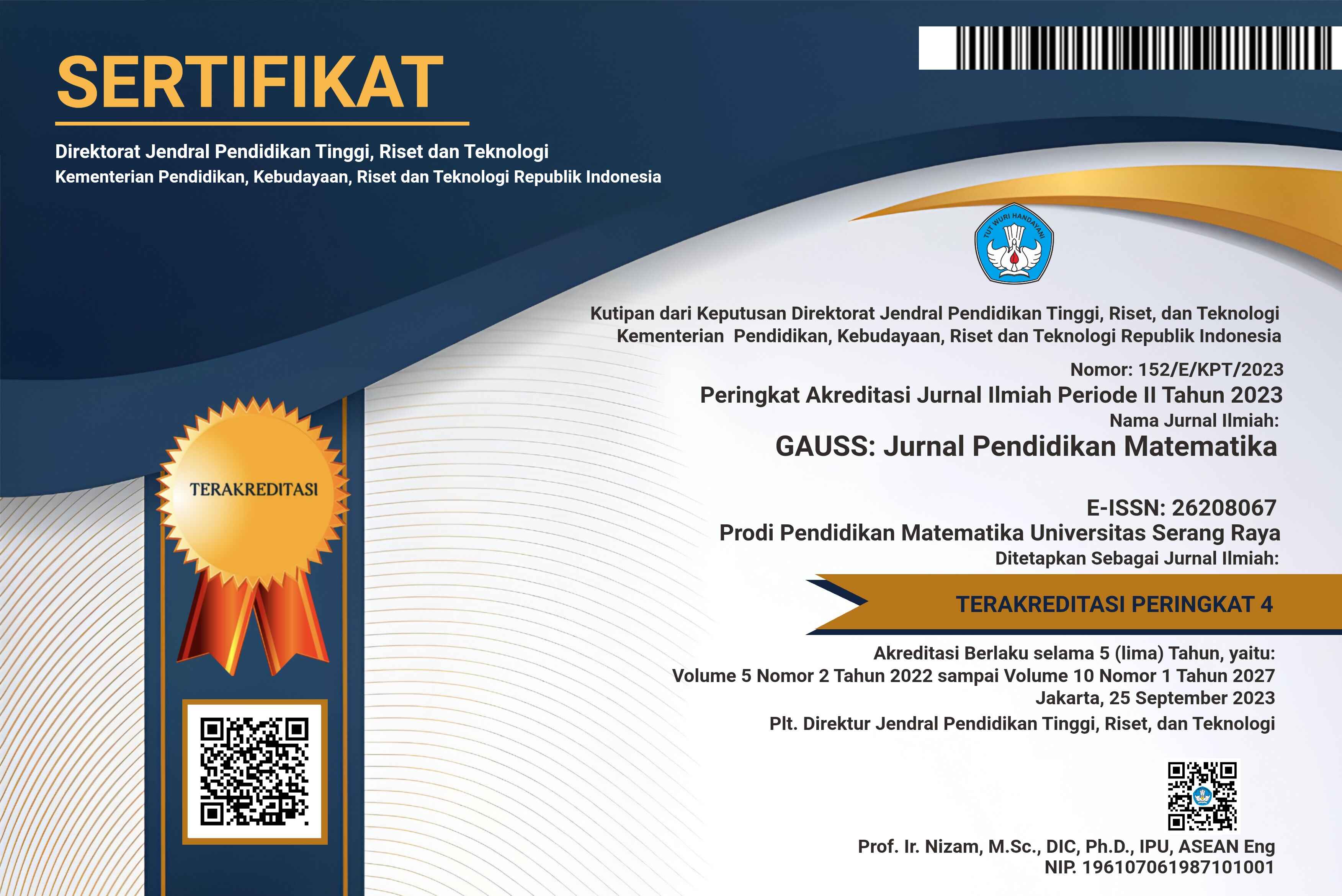Miskonsepsi Matematika Siswa Sekolah Dasar pada Materi Bangun Datar ditinjau dari Teori Humanistik
DOI:
https://doi.org/10.30656/gauss.v8i1.10668Abstract
Abstrak
Penelitian ini bertujuan untuk mengidentifikasi miskosenspsi matematika siswa sekolah dasar pada materi bangun datar ditinjau dari teori humanistik. Metode yang digunakan dalam penelitian ini adalah penelitian kualitatif deskriptif eksploratif. Penelitian ini melibatkan 3 siswa kelas IV dari SDN Dukuh Kupang II Surabaya, dengan tingkatan nilai yang berbeda yaitu tinggi, sedang, dan rendah. Instrumen yang digunakan yaitu tes tulis matematika, wawancara, dan observasi. Teknik analisis data menggunakan triangulasi teknik. Uji analisis data menggunakan uji kredibilitas, uji transferbilitas, uji dapendabilitas, dan uji konfirmablitas Indikator miskonsepsi yang dianalisis yaitu, miskonsepsi teoritikal, miskonsepsi klasifikasional, dan miskonsepsi klasifikasional. Hasil penelitian menunjukkan bahwa teori humanistik menyebabkan miskonsepsi pada siswa, yang dipengaruhi oleh kebutuhan rasa cinta dan kasih sayang, kebutuhan akan harga diri, dan kebutuhan aktualisasi diri.
Kata kunci: Miskonsepsi, Teori Humanistik, Bangun DatarAbstract
This research aims to identify mathematics misconceptions among elementary school students on the topic of flat shapes from a humanistic theory perspective. The method used in this research is exploratory descriptive qualitative research. This study involves 3 fourth-grade students from SDN Dukuh Kupang II Surabaya, with different levels of achievement: high, medium, and low. The instruments used are mathematics written tests, interviews, and observations. The data analysis technique employs triangulation of techniques. The data analysis tests include credibility testing, transferability testing, dependability testing, and confirmability testing. The indicators of misconceptions analyzed consist of theoretical misconceptions, classificational misconceptions, and classificational misconceptions. The results show that humanistic theory causes misconceptions among students, which are influenced by the needs for love and affection, the need for self-esteem, and the need for self-actualization.
Keywords: Misconceptions, Humanisthic Theory, Flat Shapes
Downloads
Published
Issue
Section
License
Copyright (c) 2025 Laisamah Zaeniyah Asy-Syafiiyah, Feny Rita Fiantika, Prayogo

This work is licensed under a Creative Commons Attribution-NonCommercial-ShareAlike 4.0 International License.
Authors who publish articles in GAUSS : JURNAL PENDIDIKAN MATEMATIKA agree to the following terms:
- Authors retain copyright and grant the journal the right of first publication with the work simultaneously licensed under a Creative Commons Attribution-ShareAlike 4.0 International License that allows others to share the work with an acknowledgment of the work's authorship and initial publication in this journal.
- Authors are able to enter into separate, additional contractual arrangements for the non-exclusive distribution of the journal's published version of the work (e.g., post it to an institutional repository or publish it in a book), with an acknowledgment of its initial publication in this journal.
- Authors are permitted and encouraged to post their work online (e.g., in institutional repositories or on their website) before and during the submission process, as it can lead to productive exchanges, as well as earlier and greater citation of published work (See The Effect of Open Access).




